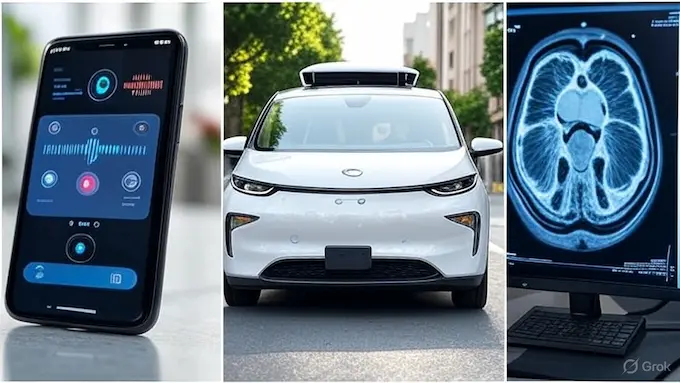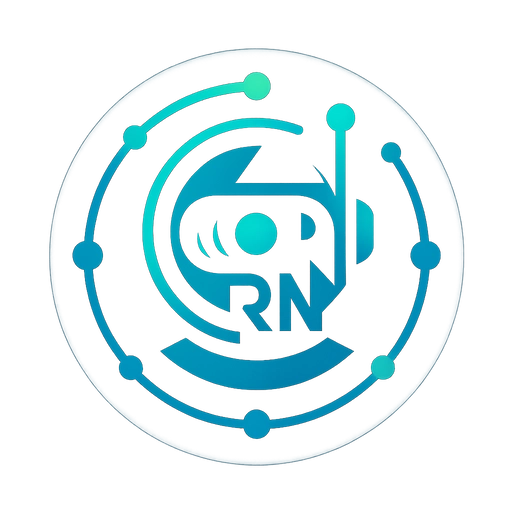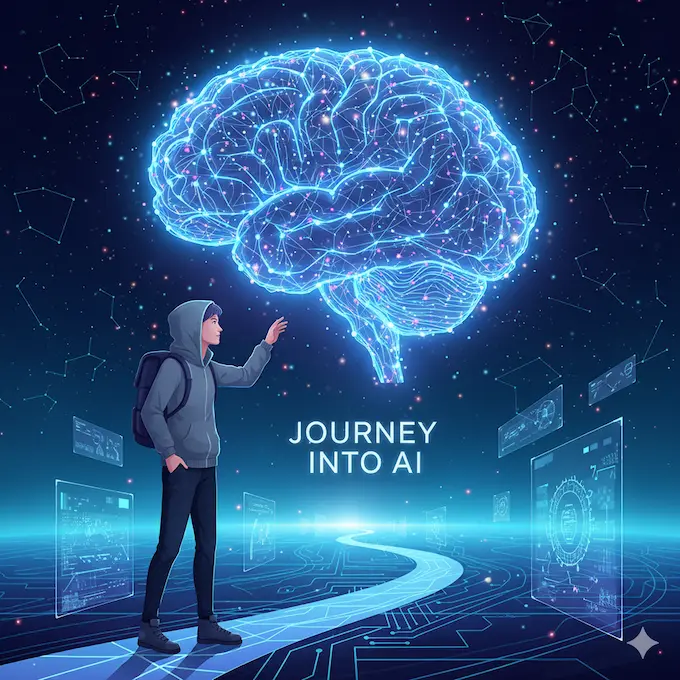Table of Contents
Introduction
Artificial Intelligence has moved from the pages of science fiction into your phone, car, and even your shopping cart. If you’ve ever asked Siri to play a song, scrolled through Netflix recommendations, or wondered how Google seems to know what you want before you finish typing, you’ve already brushed up against AI. The real question isn’t if AI will affect your life, but how much. This guide is designed for anyone taking their first steps into this field. You don’t need a Ph.D. in computer science or a wall of math equations to start learning. You need curiosity, a willingness to experiment, and a roadmap. Consider this your beginner’s map to the territory
1. THE BIG PICTURE: WHAT EXACTLY IS AI?
Artificial Intelligence, at its core, is the science of making machines learn, reason, and make decisions. Forget the Hollywood stereotype of sentient robots plotting world domination. What we actually have today is “narrow AI,” which excels at specific tasks. Think recommendation systems, fraud detection, or language translation.
AI’s roots stretch back to the 1950s, when Alan Turing asked if machines could “think.” The decades that followed saw optimism, setbacks known as “AI winters,” and then the explosion of progress in the 2010s, thanks to better algorithms, abundant data, and cheap GPU computing power. Today, AI is no longer a niche research pursuit. It’s an engine behind global innovation. Leading the charge are the United States and China, followed by the European Union, the United Kingdom, Canada, and India, each funding research labs, startups, and national AI strategies. These investment hubs show why Getting Started with AI matters for practitioners and policymakers worldwide.
| Country | AI Investment Focus | Notable Projects |
|---|---|---|
| United States | Big tech innovation, defense, healthcare | DARPA AI projects, Silicon Valley startups |
| China | Surveillance, smart cities, large-scale AI apps | AI-powered facial recognition, Baidu AI |
| United Kingdom | Ethical AI, healthcare applications | NHS AI diagnostic tools, Oxford AI research |
| Canada | Research-driven AI, open-source contributions | Vector Institute, Geoffrey Hinton’s lab |
| European Union | Regulation and Ethical AI frameworks | EU AI Act, robotics in industry |
2. THE FOUNDATIONS: KEY ARTIFICIAL INTELLIGENCE CONCEPTS
To make sense of AI, it helps to understand its main pillars. Let’s break them down without drowning in jargon.
Machine Learning is the beating heart of modern AI. Instead of hand-coding rules, we let algorithms learn from data. If you feed an ML model thousands of cat photos, it eventually learns what makes a cat a cat.
2.1 MACHINE LEARNING EXPLAINED
There are three main types of learning:
- Supervised Learning: Models learn from labeled examples. Spam filters are classic cases.
- Unsupervised Learning: Models uncover patterns in unlabeled data, like clustering customers into groups.
- Reinforcement Learning: Algorithms learn by trial and error. This is how AI mastered Go and trained robots to walk.
ML algorithms range from simple regressions to complex ensembles, but the idea remains the same: patterns in data become predictions in action.
2.2 DEEP LEARNING BASICS
Deep Learning is a specialized subset of ML inspired by the human brain. Instead of one layer of processing, it stacks many layers—hence “deep.” These neural networks excel at image recognition, speech transcription, and language understanding.
Think of each neuron as a decision-making gate. With enough layers, these networks can detect edges in images, then shapes, then entire objects like faces. This is why your phone unlocks with Face ID and why self-driving cars can tell the difference between a pedestrian and a stop sign.
2.3 NATURAL LANGUAGE PROCESSING INTRODUCTION
If ML is the brain and DL is the vision, NLP is the voice. Natural Language Processing lets machines understand and generate human language. From Google Translate to chatbots, NLP powers text classification, sentiment analysis, and question-answering systems.
Today’s most advanced models, like GPT-style transformers, don’t just parse words, they generate human-like responses. That’s why you can chat with AI as if it were a person.
2.4 COMPUTER VISION GUIDE
Computer Vision is exactly what it sounds like, teaching machines to see. It’s behind medical imaging systems that detect cancer, airport security scanners that verify your ID, and the vision stacks in autonomous vehicles.
CV tasks include:
- Object detection
- Facial recognition
- Image segmentation
What once required humans manually tagging thousands of images is now achieved with neural networks trained on massive datasets.
3. AI IN ACTION: EVERYDAY TECHNOLOGIES
AI isn’t confined to labs. You meet it daily, often without realizing:
- Streaming platforms: Netflix fine-tunes your recommendations.
- Virtual assistants: Alexa and Google Assistant process your voice commands.
- Healthcare: AI scans detect diseases earlier than some specialists.
- Finance: Fraud detection models save banks billions.
- Transportation: Tesla’s autopilot runs on layers of ML and CV.
- Search engines: Google’s ranking systems are some of the most powerful AI applications ever built.
Understanding AI in everyday life makes the subject less abstract and more exciting. It’s not a distant future, it’s your present.
| Company | Focus Area | AI Contribution |
|---|---|---|
| Google (DeepMind) | Deep Learning, Reinforcement Learning | AlphaGo, cutting-edge NLP models |
| OpenAI | Natural Language Processing, AI Alignment | GPT models, safety-focused AI research |
| Microsoft | Cloud AI, NLP, Computer Vision | Azure AI, Copilot, enterprise AI tools |
| Tesla | Computer Vision, Reinforcement Learning | Autonomous driving systems |
| NVIDIA | Hardware & Deep Learning | GPUs powering ML and DL models |
| IBM | NLP, Business AI Applications | Watson, enterprise AI integration |
4. GETTING STARTED WITH AI: YOUR LEARNING PATH
Here’s the good news. You don’t need to enroll in a multi-year program or wait for the “right moment.” You can start today.
4.1 HOW TO LEARN AI FROM SCRATCH
Start simple. Learn Python, the lingua franca of AI. It’s approachable, has tons of libraries like TensorFlow and PyTorch, and is beginner-friendly.
4.2 RESOURCES THAT WORK
- Online Courses: Coursera (Andrew Ng’s course is legendary), fast.ai, and edX.
- Hands-On Practice: Kaggle datasets let you experiment in real-world contexts.
- Books: “The Hundred-Page Machine Learning Book” is an efficient entry point.
- Communities: Join AI forums, GitHub projects, or local meetups.
4.3 FIRST STEPS INTO AI DEVELOPMENT
Pick a simple project. Maybe a spam detector, a movie recommender, or a small image classifier. Don’t overthink it. Building something concrete accelerates understanding far faster than theory alone.

4.4 INTRODUCTION TO AI FOR NON-PROGRAMMERS
Even if you don’t code, you can still explore. Tools like Google’s Teachable Machine let you train simple models by uploading pictures or recording sounds. It’s a gentle, visual way to get the intuition behind AI.
| Stage | Action Step | Tools/Resources |
|---|---|---|
| First Steps into AI | Learn Python basics | Codecademy, Python.org |
| Understanding AI Concepts | Study Machine Learning Explained, Deep Learning Basics | Coursera (Andrew Ng), fast.ai |
| Hands-On Projects | Build small models with datasets | Kaggle, Google Colab |
| Exploring Applications | Try NLP and Computer Vision projects | Hugging Face, OpenCV |
| Ethical Awareness | Read about fairness, bias, and privacy | Alan Turing Institute, Google AI |
5. ETHICAL AI: WHY RESPONSIBILITY MATTERS
Powerful tools demand responsible use. AI isn’t free from problems, and ignoring them is dangerous.
- Bias in data: If historical data is biased, the model will be too.
- Job displacement: Automation changes economies, and we need strategies for transition.
- Privacy: Facial recognition and surveillance raise civil liberties questions.
- Fairness and accountability: Who’s responsible when an AI makes a harmful decision?
The easiest way to understand machine learning ethics is to think about trust. If we don’t trust the outputs, adoption will stall. Responsible AI isn’t a side topic, it’s a requirement for sustainable progress.

6. WHAT ARE THE CORE CONCEPTS OF ARTIFICIAL INTELLIGENCE?
If we distill it down, the fundamentals you should master early are:
- Data is everything. More data means better performance, but it must be clean.
- Algorithms shape learning. Different tasks require different models.
- Feedback loops drive improvement. Models learn, adapt, and refine through iterations.
- Context matters. AI is not magic. It needs thoughtful application.
Once you grasp these, the rest of AI, whether neural networks, reinforcement learning, or advanced transformers, becomes easier to learn. Lets understand Getting Started With AI.
| AI Concept | What It Means (Simple) | Everyday Example |
|---|---|---|
| Machine Learning | Algorithms learn patterns from data | Email spam filters |
| Deep Learning | Neural networks with many layers | Face ID on smartphones |
| Natural Language Processing (NLP) | Understanding and generating human language | Chatbots, Google Translate |
| Computer Vision | Machines interpreting images and video | Self-driving cars, medical imaging |
| Reinforcement Learning | Learning through trial and error with feedback | AlphaGo, robotics in warehouses |
7. THE FUTURE IS INTELLIGENT
Getting Started with AI isn’t about memorizing definitions. It’s about developing a mindset. A mindset that embraces curiosity, experimentation, and critical thinking. The landscape of AI is expanding faster than almost any other technology in history. That’s thrilling if you’re prepared, and intimidating if you’re not.
So start now. Write your first line of Python. Train a toy model. Read articles that demystify deep learning basics. Join discussions about ethical AI. The easiest way to understand machine learning is by doing, not by waiting.
AI will not wait for you to be ready. The best time to begin was yesterday. The second best time is today. So gird up your lines for Getting Started With AI .
Call to Action: Take your first step. Open that tutorial, download a dataset, or try building a neural network simple model. Getting Started with AI doesn’t require permission, it only requires you.
FREQUENTLY ASKED QUESTIONS ABOUT GETTING STARTED WITH AI
What does Getting Started with AI really mean?
Getting Started with AI means taking the first steps to understand core concepts like machine learning, deep learning, natural language processing, and computer vision. You don’t need advanced math right away, just curiosity and the willingness to learn through simple projects and tutorials.
How do I begin if I have no coding experience?
You can still get started with AI without being a programmer. Tools like Google’s Teachable Machine or beginner-friendly platforms such as Runway and Hugging Face let you experiment visually. Once comfortable, you can move toward Python, which is the most popular language for AI development.
What are the core concepts of artificial intelligence I should learn first?
Focus on these basics: supervised learning, unsupervised learning, reinforcement learning, neural networks, and simple natural language processing. Understanding these ideas gives you a foundation for exploring more advanced topics.
What is the easiest way to understand machine learning?
The easiest way to understand machine learning is by working with small, practical examples. Build a spam filter, try sentiment analysis on tweets, or play with image classification. Getting Started with AI becomes far more intuitive when you see how models learn patterns from data.
How can non-programmers benefit from Getting Started with AI?
Non-programmers can use AI to automate workflows, analyze text, create smart assistants, or visualize data without writing code. Many low-code and no-code AI tools are designed specifically for beginners.
Are there real-world examples of AI technology I can study?
Yes. Look at how Netflix recommends shows, how Google Translate converts languages, how Tesla uses computer vision in self-driving cars, and how hospitals use AI for medical imaging. These are excellent case studies when Getting Started with AI.
How long does it take to learn the basics of AI?
If you dedicate a few hours per week, you can grasp the fundamentals of AI in three to six months. Getting Started with AI is not about speed, it’s about steady practice and building projects that reinforce your understanding.
What ethical issues should I keep in mind when Getting Started with AI?
Always remember that AI can inherit biases from data. Beginners should learn about fairness, transparency, and privacy early on. Ethical awareness is just as important as technical skill when building AI systems.
What are the first steps into AI development after theory?
Once you’ve learned the basics, try a hands-on platform like Kaggle. Use pre-built datasets, run starter notebooks, and begin experimenting. The shift from reading about AI to actually building models is the most important step when Getting Started with AI.


